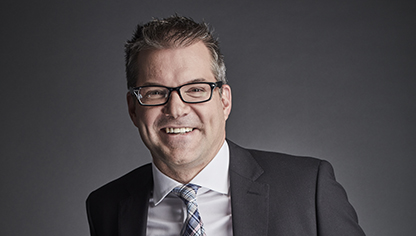Receive Focus insights straight to your inbox
As investors, we are often told: "Diversification is your only free lunch." This advice is backed up by various studies, conducted at fancy institutions such as Harvard, Yale and the Massachusetts Institute of Technology, which show that the most important decision you can make as an investor is the asset allocation decision – that is, the decision to diversify capital within and across various asset classes.
Most investment professionals would agree that although diversification is no guarantee against loss, it is a prudent strategy to adopt towards your long-range financial objectives. However, thinking further on the subject, I wonder if there isn't such a thing as overdiversification, or even diworsification?
Diworsification
Initially described in Peter Lynch's book, One Up on Wall Street (published in 1989), as a company-specific problem, the term 'diworsification' has morphed into a buzzword used to describe inefficient diversification as it relates to the entire investment portfolio.
Owning too may investments can confuse you, increase your investment cost, add layers of required due diligence and lead to below-average, risk-adjusted returns.
Here are three signs that you may be undercutting your investment performance by overdiversifying (diworsifying) your portfolio:
1. You own too many unit trusts within any single investment style category
Investing in more than one unit trust within any style category adds investment costs, increases required investment due diligence, and generally reduces the rate of diversification achieved by holding multiple positions.
Some unit trusts with very different names can be quite similar with regard to their investment holdings and overall strategy. To help investors sift through the marketing hype, the Association for Savings and Investment SA has unit trust fund-style categories that group together unit trusts with fundamentally similar investment holdings and strategies. Cross-referencing the unit trust fund-style categories with the different unit trusts in your portfolio is a simple way to identify whether you own too many investments with similar risks.
2. You own an excessive number of individual stock positions
Too many individual stock positions can lead to enormous amounts of required due diligence, a complicated tax situation and performance that simply mimics an index, albeit at a higher cost. A widely accepted rule of thumb is that it takes about 20 to 30 different companies to adequately diversify your stock portfolio. However, there is no clear consensus on this number.
In his book, The Intelligent Investor (first published in 1949), Benjamin Graham suggests that owning between 10 and 30 different companies will adequately diversify a stock portfolio. In contrast, a 2003 study by Dr Meir Statman, titled How Much Diversification is Enough?, stated that today's optimal level of diversification, measured by the rules of mean-variance portfolio theory, exceeds 300 stocks.
Regardless of an investor’s magic number of stocks, a diversified portfolio should be invested in companies across different industry groups and should match the investor's overall investment philosophy.
3. You own privately held 'non-traded' investments that are not fundamentally different from the publicly traded ones you already own
Non-publicly traded investment products are often promoted for their price stability and diversification benefits relative to their publicly traded peers. While these alternative investments can provide you with diversification, their investment risks may be understated by the complex and irregular methods used to value them.
Before purchasing a non-publicly traded investment, ask the person recommending it to demonstrate how its risk/reward ratio is fundamentally different from the publicly traded investments that you already own.
Conclusion
"Wide diversification is only required when investors do not understand what they are doing." – Warren Buffett
Financial innovation has created many new investment products with old investment risks, while financial advisers are often relying on increasingly complex statistics to measure diversification. This makes it important for you to be on the lookout for diworsification in your investment portfolio.
Working with your financial adviser to understand exactly what is in your investment portfolio, and why you own it, is an integral part of the diversification process.
About the author

Patrick Duggan
Wealth manager: Investec Wealth & Investment
Patrick is a senior private client wealth manager with Investec Wealth & Investment, specialising in providing holistic investment planning advice to some of South Africa’s high net worth and ultra-high net worth individuals, families and their associated entities.




